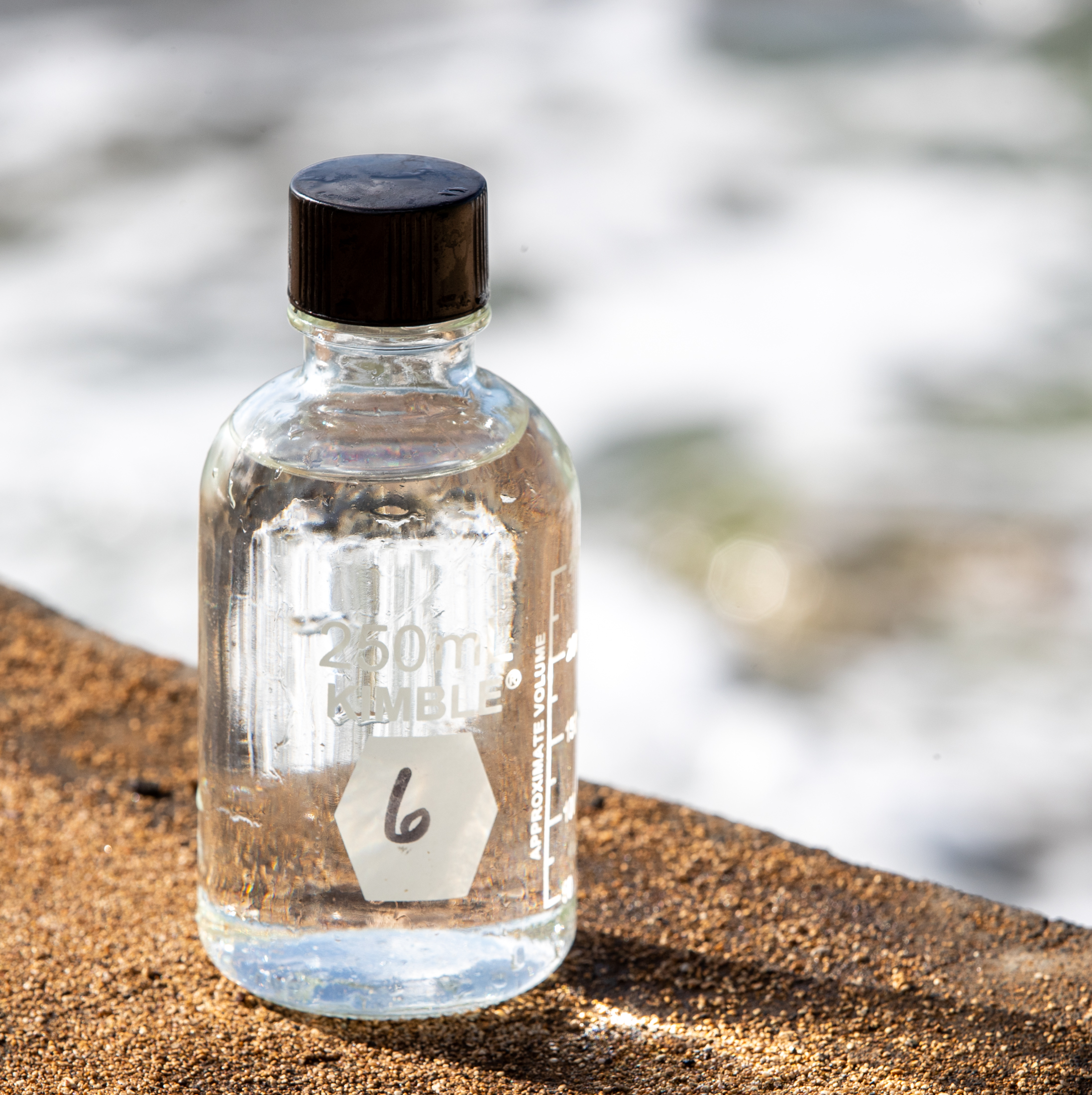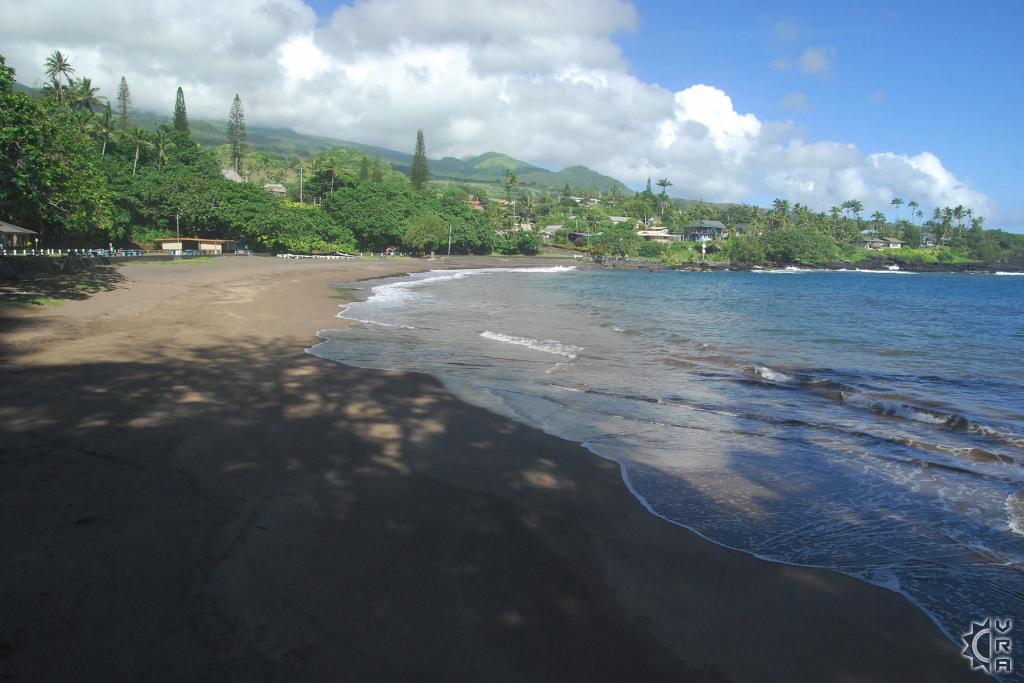-1.jpg)
BWTF Publishes 2022 Annual Report
Surfrider Foundation believes that all people should have access to water quality data. Our BWTF program empowers the local community to make informed decisions about where it is – or is not safe to swim.
Maui, Hawaiʻi
Surfrider Foundation’s Blue Water Task Force (BWTF) program released its annual water quality report for 2022. In 2022, trained BWTF volunteers sampled 21 sites. During this time period, 199 samples were collected, generating water quality information for recreational waters along the islandʻs North Shore and in the East Maui community of Hāna. Four new sites were added in Hāna and one new site was added at Maʻalaea Bay. Samples were tested for the presence of Enterococcus, a fecal bacteria that indicates the presence of human or animal waste in the water. Elevated levels of Enterococcus increase the likelihood that other pathogens that can make people sick may be present. Water is considered unsafe if levels exceed 130 Enterococcus forming units/100mL. Sample collection and pollution level standards set by Hawaiʻi Department of Health (HDOH). Samples are processed at the Pāʻia Youth & Cultural Center.
Of the 21 sites regularly tested in 2022, the Wailuku River had the highest bacteria readings.

What did we find?
Of the 21 sites regularly tested in 2022, eight sites (Kūʻau Cove/Mamaʻs Beach, Wawau Point/Baby Beach, Hoʻokipa Beach Park West, Pāʻia Bay, Sugar Cove, Kahului Harbor, Wailuku Stream, and Māliko Bay) had at least one sample that exceeded state health standards. This was higher than in 2021 where five sites had at least one sample exceed.
Topping the list, for the second year in a row, is Wailuku Stream with 27% of samples exceeding health standards in 2022. This site also had the highest single bacteria reading last year of 4,366 Enterococcus mpn/100mL (the state standard is 130 mpn/100mL). The contributing watershed and nearby coastline has a particularly high concentration of cesspools.The chronic pollution documented by the BWTF at this site indicates the potential impact of sewage pollution.
.jpg)
BWTF Coordinator Greg Masessa analyzes water quality samples at the Pāʻia Youth and Cultural Center
.jpeg)
BWTF Coordinator Arleen Velasco is testing water samples for fecal indicator bacteria at the Kewalo Marine Laboratory.
Photo Credit: Erik Kabik Photography/erikkabik.com
Why are our coasts polluted?
The BWTF chooses sites that are likely subject to higher levels of pollution to track pathogen levels and inform the local community. For example, Wailuku River and Māliko Gulch are located at stream mouths and have known contributions from cesspools. The pollution documented at these sites by the BWTF indicates the potential impact of sewage pollution in these areas.
“Our data indicates that coastal cesspools are likely contributing to high bacteria readings in certain areas of the island,” said Greg Masessa, Coordinator of the Maui Blue Water Task Force. “In addition, large storms can contribute to elevated bacteria levels in coastal areas as flowing streams wash everything from upstream – pollutants, bacteria, nutrients, pesticides – into the ocean.”
2022 was the first year samples were collected in Hāna
Due to its remote location, the Department of Health does not conduct regular coastal water quality monitoring in Hāna. Mahalo to Auntie Mary Ann Kahana and her hui of volunteers who helped ensure Hāna sites were monitored through the BWTF program.

Hāna Bay was sampled 6 times by volunteers in Hāna in 2022.
.jpg)
The BWTF sites with chronically high bacteria readings are typically located at the mouth of streams or rivers. Chronic pollution at these sites may also be attributed to land-based runoff from upland areas that flows into the ocean. Families, ocean users, and the public should be aware of the poor water quality conditions in these freshwater flows and seek to avoid them. The public should be particularly aware after heavy rain events that lead to increased runoff and can prompt Brown Water Advisories. Even if you do not see a public notice posted, avoid brown water until conditions clear.
“We strongly recommend that the public stay out of the water if it is brown. The brown water indicates runoff from upslope areas and we often find elevated bacteria levels,” said Greg Masessa.
BWTF Maui Volunteers collecting during rainy day events.
Stop Sewage Pollution
As part of its recently launched STOP Sewage Pollution program, Surfrider Foundation encourages homeowners to improve water quality by following these 8 simple steps:
- Convert your cesspool
- Share your knowledge about the impacts of cesspools on water quality
- Inspect and pump your septic tanks and cesspools regularly.
- Don’t use septic additives.
- Only flush the three P’s (pee, poop and toilet paper)
- Don’t pour cooking grease or oils down the drain.
- Conserve water inside your home.
- Soak up the rain and reduce runoff by directing roof downspouts into a rain barrel or vegetated area.
Community members are encouraged to check water quality results posted online before they head to the beach at bwtf.surfrider.org/explore/44. Current and historic data are available.
